Nikon D800 Review
Nikon D800 Performance - How well does it take pictures?
Ultimately, it is the image quality that makes a camera worth buying. For a digital SLR, image quality greatly depends on the lens used. While color, noise, contrast and exposure are properties of the camera, distortion, vignetting and chromatic aberrations are properties of the lens. Sharpness depends on the weakest link. So, the camera cannot capture more details than the lens lets through. Conversely, a lens can transmit a greater amount of details than the sensor can capture.
A high-resolution full-fame DSLR like the Nikon D800 is particularly demanding on lenses and it cannot show its highest image quality without a suitably sharp lens. Its incredible resolution resolves extremely fine details and its full-frame sensor uses the weakest outer-portions of a lens. The Nikkor AF-S 24-85mm F/3.5-4.5G ED VR
Nikkor AF-S 24-85mm F/3.5-4.5G ED VR which performs extremely well on a D7000 is very soft on the D800. While the Nikkor AF-S 24-70mm F/2.8 IF-ED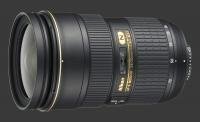
Nikkor AF-S 24-70mm F/2.8 IF-ED is sufficiently sharp. As general rule, big expensive cameras require big expensive lenses.

Image noise of the Nikon D800 is impressively low, particularly considering the 36 megapixels of resolution. It produces perfectly clean images until ISO 800 with noise barely visible at 1600. Both ISO 3200 and 6400 have noticeable noise when viewed at 100% but remain extremely usable for all but very large prints. The expanded ISO 12800 an 25600 sensitivities show stronger noise yet, when downsizes to common print sizes, it appears relatively minor.
Compared to the Nikon D600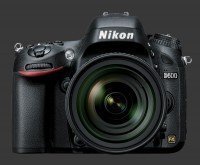
Nikon D600 reviewed recently, there is obviously more per-pixel noise at matching ISO. When considering a final output medium though, it is more relevant to compare noise visible at equal resolution. For doing this, the review samples contain an additional page with crops from D800 images resized to 24 MP and compared to corresponding crops from the D600. The difference obviously narrows but the D600 stays cleaner in terms of balance between noise and details. It also has measurably more dynamic-range.
Image sharpness is highly dependent on the lens which is the most likely cause of soft images on the D800. Keep in mind that most lenses need to be stopped down 1 or 2 stops from their maximum apertures and the D600 has a diffraction limit around F/13, similarly to DX cameras. Even at the optimal aperture, this DSLR never shows critical sharpness due to its anti-alias filter which is not present in the otherwise identical Nikon D800E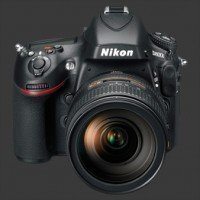
Nikon D800E.
In-camera sharpening is set on a 10-point scale, with the default being rather soft. A Sharpness setting of 3 delivers the maximum sharpness without artifacts but leaves images still looking soft when seen at 100%. A setting of 4 introduces absolutely minimal artifacts and remains usable for all but the largest prints. One can always apply their own sharpening if shooting RAW.

The Nikon Matrix metering of the D800 is generally good and consistent with standard lenses. It often chooses conservative exposures and rarely blows out highlights. On the flip side, it does produce more under-exposure than average. The system seems more influenced by the center of the frame than ideal which may cause over-exposure when only a small portion of sky is showing for example. The D800 supports a customizable metering offset of ±1 EV in 1/6 EV increments that can be set independently for each metering mode. This is great since Spot and Average metering work exactly as expected.
Image parameters provide a good amount of fine-grain flexibility in terms of color rendition. There are six picture styles offering various degrees of realism. Vivid is not as extremely overdone as on previous Nikon models but still visibly over-saturated. The Standard and Neutral styles are closest to reality with natural colors somewhere in between. The most realistic results were obtained in Standard style.
Automatic white-balance is good outdoors but struggles under artificial lighting. There are two Auto settings which vary in how they deal with the warm color-cast typical of tungsten lighting. One setting tries to correct it while the other does not. Unfortunately, both fail more often than usual indoors.
The Nikon D800 is very fast and extremely responsive. Its speed is characterized by the following numbers:
- Power On: Instant. Excellent.
- Power Off: Just under ½s. Awesome.
- Autofocus: Below ¼s in moderate to good light, rarely above ½s in low-light. Very impressive.
- Focus Confirm: Nearly instant for both autofocus and manual focus. Excellent.
- Shutter-lag: Instant followed by extremely short black-out. Extremely good.
- Shot-to-Shot Speed: About 1/3s. Quite good.
- Instant Review: About ½s. Good.
- Playback Mode: Below ¼s. Very good.
- Shooting Mode: Instant. Great.
This camera features automatic distortion correction based on pre-programmed lens data. Due to the nature of optical distortion, parts of the captured image get cropped, making precise framing impossible. Enabling it also slows the D800 down by adding almost ½s to the Instant Review delay. Plus, It reduces buffer-depth for JPEG images by nine frames. Distortion Correction has no impact on RAW files.
There is also an optional Vignetting Control feature which does not affect camera performance. Unfortunately, this one is not profile-based and simply applies the selected level of correction. Options are Off, Low, Normal and High. While vignetting is actually very easy correct in software without detriment to image quality, we cannot recommend using this feature. Vignetting varies by lens, focal-length and aperture, so it would be considerably too much work to keep adjusting Vignetting Control according to constantly changing parameters.

The 51-point autofocus system used on the D800 is extremely fast. It slows a little in very low-light but remains well ahead of most DSLRs. In continuous autofocus mode, the camera manages to keep up well with moving subjects.
Battery-life is reasonable, achieving 900 shots-per-charge according to the CIPA standard. Keep in mind that, as usual, this number accounts for 50% flash use but not video recording and extra use of the rear LCD.
Nikon D800 Conclusion
The Nikon D800 has been grabbing headlines and accolades since it was launched. Its class-leading 36 MP resolution delivers 50% more resolution than ever seen from a DSLR, opening up the potential for huge and highly detailed prints. Its CMOS sensor delivers very low image-noise with nearly noise-free results until ISO 1600 at full-resolution.
Even though its ultra-high resolution gets the most attention, the D800 remains a high-end Nikon DSLR with all that that implies: great ergonomics with a simple and intuitive interface, plenty of manual controls, a speedy autofocus system and a 100% coverage viewfinder in a sturdy weather-sealed body with dual control-dials.
The D800 is a solid performer with one of the fastest autofocus system and operational speed that rarely holds the photographer back. The high-resolution though creates large filesJPEG up to 32 MP and 14-bit RAW up to 54 MB which require a considerable amount of processing power. For this reason, it is not as fast as the D4 reviewed here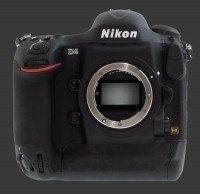
Nikon D4 which is more suitable for action photography.
There very few quirks to this camera. The poor Automatic White-Balance under artificial light may annoy people shooting JPEG but is easy to work around. Live-View is better that on other Nikons but ranges from a little off to completely wrong, depending on the exposure mode. A remote is recommended for vibration-free results given that Exposure Delay mode is only accessible via the menu system.
For the largest prints afforded by a DSLR, there are only two choices, the subject of this review or its anti-alias-filter-free sibling, the D800E
Nikon D800E. The D800E is capable of rendering even finer details at the risk of moire artifacts. In practice this occurs far more with man-made objects than in nature, so the right one depends on your usual subjects. When moire does appear, it can be partially reduced by software but it takes manual work.
Several months ago, Nikon introduced their low-cost full-frame DSLR ever, the D600 reviewed here
Nikon D600, for almost $1000 USD less, prompting the question of how much the extra 12 megapixels are worth. The answer should be easy unneeded! However, there remains other differences between these two models. The autofocus of the D800 is both faster and more sensitive. Plus, the D800 adds a number of high-end features, including a built-in viewfinder shutter, 9-frame bracketing and sync-port.
Obviously, 36 megapixels is a huge reason to go for the Nikon D800. As this review shows though, there are plenty of other reasons, including a speedy performance, complete feature set and great ergonomics. The only caution is that this camera demands the very best lenses to show its true performance.
 |
Please Support Neocamera
All information on Neocamera is provided free of charge yet running this website is a huge endeavor. Purchases made via affiliate links found throughout the site help keep it running and up-to-date. There is no additional cost to you, so please consider buying via these links to our affilates:
Thank you for your support!
Nikon D800 Highlights
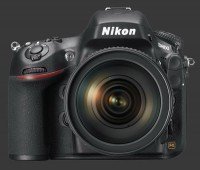
Sensor-Size: 36 x 24mm

Actual size when viewed at 100 DPI
| 36 Megapixels DSLR | ISO 50-25600 |
| Nikon F Mount 1X FLM | Shutter 1/8000-30s |
| 100% Coverage Extra Large Viewfinder | Full manual controls, including Manual Focus |
| 2 Axis Digital Level | Custom white-balance with 2 axis fine-tuning |
| Weatherproof | Spot-Metering |
| Built-in Dust Reduction | Hot-Shoe & Sync-Port |
| 4 FPS Drive, 22 Images | Stereo audio input |
| 1920x1080 @ 30 FPS Video Recording | Lithium-Ion Battery |
| 3.2" LCD 920K Pixels | Secure Digital Extended Capacity, Compact Flash Type 1 |
Updates
2025.11.13

Best Gifts for Photographers in 2025 by Budget
The annual Neocamera Photography Gift Guide updated to 2025. Find great gifts for photographers with any price budget.
2025.07.07

Stellar Photo Recovery Review
Review of Stellar Photo Recovery V12. This Windows and MacOS software can recover photos and videos in a huge number of formats from memory cards, USB drives, SSDs and HHDs.
2025.05.14

Huion Kamvas 13 Gen 3 Review
In-Depth review of the Huion Kamvas 13 Gen 3 Pen Display Tablet for photographers and graphic artists.
2025.01.18

Fujifilm GFX 2025 Lens Roundup
Lens Review roundup of Fujifilm GFX Medium-Format lenses. Quality, performance and handling of the GF20-35mm F/4R WR, GF30mm F/3.5 Tilt-Shift and the GF55mm F/1.7.
2024.11.18

Best 2024 Photography Gifts for Every Budget
Great gifts for photographers and photo enthusiasts selected for every budget among the best products of 2024.
2024.08.07

Eye Protection Tips for Professional Photographers
The four main considerations for professional photographers regarding eyewear.
2024.07.14

Fujifilm X100VI Review
Flagship fixed-lens compact digital camera with a 40 MP sensor and Image-Stabilization, a first for the series. Retro design featuring dual control-dials, plus direct ISO, Shutter-Speed and EC dials. Its hybrid viewfinder can switch between EVF and OVF mode.
2024.05.09

Fujifilm GFX100 II Review
Flagship 102 Megapixels Medium-Format Mirrorless Digital Camera with 8-Stop 5-Axis IBIS, 8 FPS Drive, 8K Video and 400 MP Super-Resolution capture in a weatherproof and freezeproof body with dual control-dials and dual memory-card slots.
2024.04.03

Fujifilm X-T5 Review
Newest Fujifilm flagship boasting a 40 MP APS-C sensor, 5-axis IBIS with 7-stop efficiency, 15 FPS continuous drive, 6.2K Video capture, dual control-dials and dual SDXC UHS-II slots in a sturdy weatherproof and freezeproof body.
2023.11.20

Best Digital Cameras of 2023
Find out which are the Best Digital Cameras of 2023. All the new Mirrorless Digital Cameras from entry-level to high-end professional.
2023.07.10

Fujifilm X-H2 Review
40 Megapixels APS-C Hybrid Mirrorless Digital Camera with 7-stop IBIS. Fastest shutter ever and 8K video capture. Large builtin EVF with 0.8X magnification and 5.8 MP, plus an Eye-Start Sensor. Packed with features and large number of controls in a weatherproof and freezeproof body.
2023.05.07

Sony FE 20-70mm F/4G Review
Review of the unique Sony FE 20-70mm F/4G lens. The optical zoom of this lens spans ultra-wide-angle and medium focal-length coverage, making it one of the most versatile Full-Frame lenses on the market.











